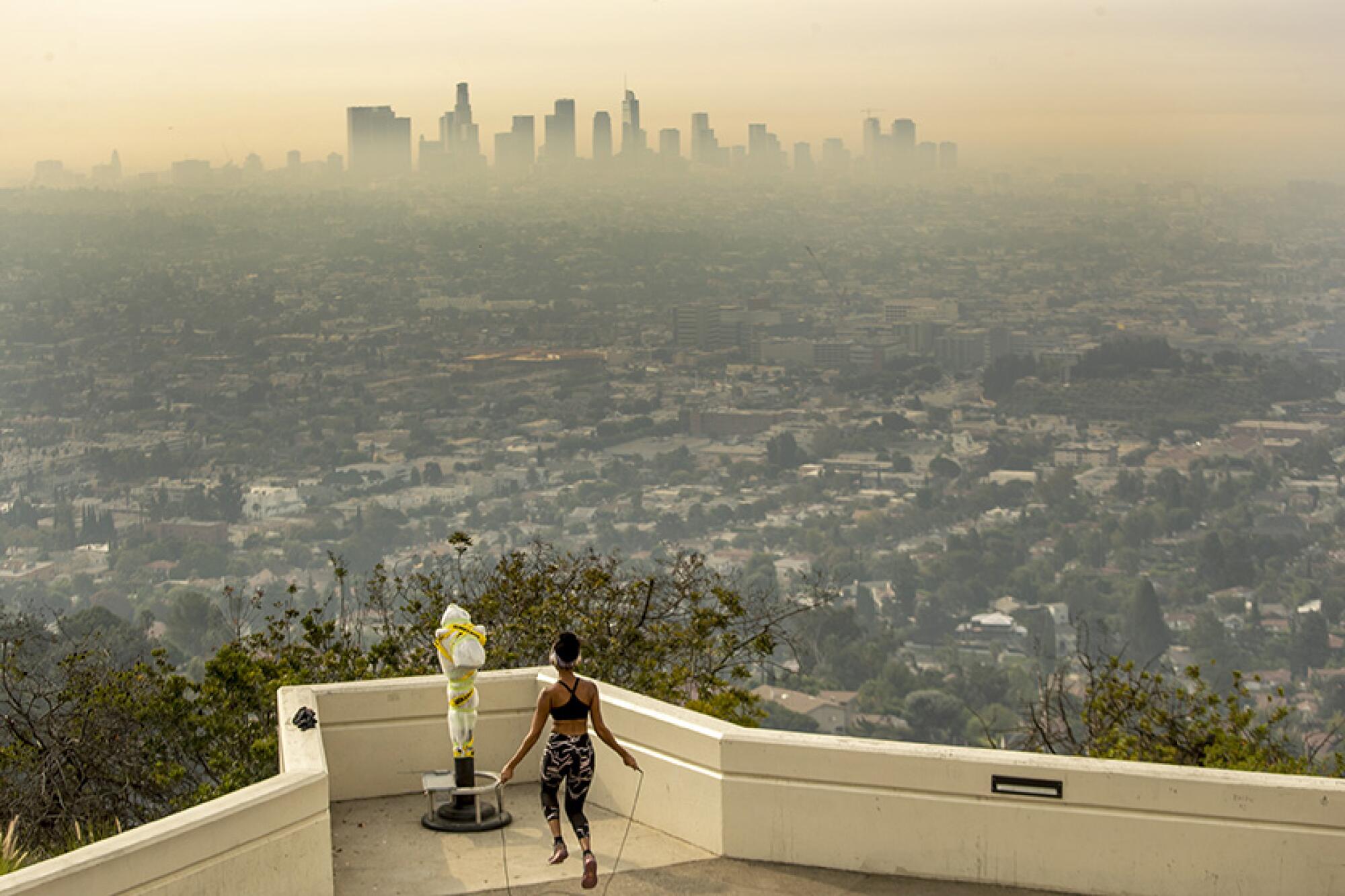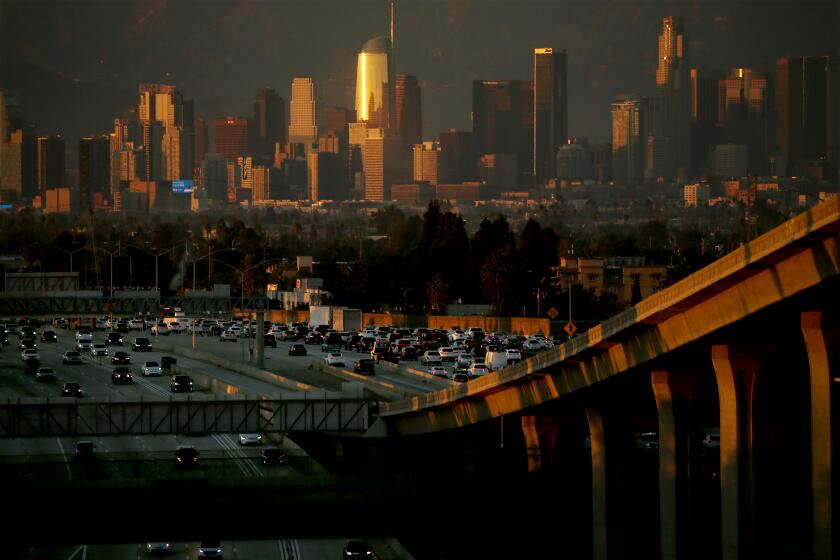
- Share via
Taking aim at a form of air pollution that has long vexed Californians from Los Angeles to the Bay Area, the U.S. Environmental Protection Agency announced Wednesday that it was tightening national standards for fine particulate matter — a health threat that has been linked to lung and heart disease.
“Today’s action is a critical step forward that will better protect workers, families and communities from the dangerous and costly impacts of fine particle pollution,” EPA Administrator Michael S. Regan said in a news conference. “The science is clear, soot pollution is one of the most dangerous forms of air pollution, and it’s linked to a range of serious and potentially deadly illnesses, including asthma and heart attacks.”
Aggressive and impactful reporting on climate change, the environment, health and science.
Roughly 30 times smaller than the width of a human hair, fine particulate matter — also called soot or PM2.5 — is released from industrial smokestacks, vehicle exhaust, wildfires, agricultural work and even some forms of cooking. This microscopic debris is small enough to pass into the bloodstream after being inhaled.
In announcing the move, Regan said the tighter standards would prevent thousands of premature deaths and improve the quality of life in disadvantaged communities, where residents endure some of the highest concentrations of the pollutant.
As an underground fire burns deep within Chiquita Canyon Landfill, air regulators are raising alarms over the possible spread of toxic vapors.
The new standard lowers the acceptable limit to 9 micrograms per cubic meter, a 25% decrease from the current standard of 12 micrograms per cubic meter.
The updated standard is expected to prevent up to 4,500 premature deaths per year and yield up to $46 billion in net health benefits in 2032, according to federal estimates. Regan told reporters that it demonstrates the Biden administration’s commitment to science-based decision-making that improves the quality of life in front-line communities.
“The impact of this pollution oftentimes disproportionately affects our most vulnerable communities, including low-income communities, communities of color, children, older adults, and those who struggle with heart or lung conditions,” Regan said.
Although the vast majority of counties nationwide already comply with new standards, most of California’s population lives in areas that have failed to meet the old threshold — including Greater Los Angeles, San Diego, the Bay Area and the San Joaquin Valley.
As a result of the new rules, state and local officials will need to take drastic steps to curtail pollution from the world’s fourth-largest economy and the nation’s largest population.
“The announcement from EPA is a really important milestone in the pathway to cleaning up carcinogenic particle pollution,” said Will Barrett, senior director with the American Lung Assn. “There’s no doubt about it, particle pollution kills thousands of people annually. We know how harmful it is, and that’s why it’s so important that we set in motion this new process to tighten the standards and make sure that we’re bringing harmful pollution levels down across the country and, certainly, here at home in California where we have some of the most difficult particle challenges in the nation.”
The U.S. EPA is planning to reject Southern California’s plan to reduce smog, which called for the federal government to take more action.
The San Joaquin Valley, a hub of oil drilling and agricultural dust, has long had the highest levels of fine particulate pollution. Bakersfield and Visalia led the nation with an annual average concentration of 17.8 micrograms per cubic meter between 2019 and 2021, according to the American Lung Assn.
Greater Los Angeles ranked fourth and experienced 14.2 micrograms per cubic meter. Although the region’s bustling ports and warehouse goods economy contribute significantly to this pollution, the largest sources are released from its 17 million residents.
The leading source of particulate pollution in Los Angeles is cooking, which releases 11.6 tons per day. Other top sources include residential heating and road dust from vehicle brakes and tires.
The EPA announcement was largely celebrated by environmental advocates, who agreed the stricter measures would push for some of the most polluted communities to curb harmful emissions and incorporate more zero-emission technology. But some expressed disappointment that the EPA didn’t follow the guidance of Biden’s science advisory committee, a consortium of academics and experts.
The majority of the panel recommended that Regan propose an annual limit of 8 to 10 micrograms per cubic meter. However, they also suggested the agency lower the 24-hour standard for fine particulate to between 25 and 30 micrograms, from its current threshold of 35 micrograms — a move that would safeguard against short-term outbreaks of pollution — such as a malfunction at a refinery — which can also be life-threatening.
Some industry leaders voiced their displeasure with the new environmental standards, arguing businesses could face permitting hurdles when they contribute only a fraction of emissions.
Tightening the standard “will grind permits to a halt for a large portion of our country,” said Marty Durbin, senior vice president for policy at the U.S. Chamber of Commerce. “EPA’s new rule is expected to put 569 counties out of compliance and push many others close to the limit, which threatens economic growth. Compliance with the new standard will be very difficult because 84% of emissions now come from non-industrial sources like wildfires and road dust that are costly and hard to control.”
Toward a more sustainable California
Get Boiling Point, our newsletter exploring climate change, energy and the environment, and become part of the conversation — and the solution.
You may occasionally receive promotional content from the Los Angeles Times.










